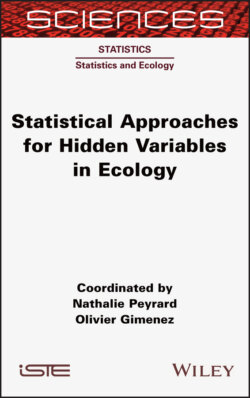Читать книгу Statistical Approaches for Hidden Variables in Ecology - Nathalie Peyrard - Страница 27
1.2.2.3. Covariates inclusion
ОглавлениеA further question concerns the extent to which activity is influenced by covariates (distance from a point of interest, time of day, etc.). One way of including covariates is to model their impact on the transition between activities (Calenge et al. 2009; Morales et al. 2004; Michelot et al. 2016).
For example, in the model presented here, ℙ (Zt = j|Zt−1 = i) is independent of t and takes a value of Π (i, j). Let us suppose that at each moment t, p covariates are measured and stored in a line vector xt. Transition probability can be linked to these variables according to a multiclass logistic regression approach:
The first equation indicates that the probability of switching to a different activity j from a current activity i is connected to external conditions via a linear combination of covariates at time t. β(i, j) is the column vector (of dimension p) of the coefficients corresponding to the influence of each covariate on this probability. The second equation is a constraint equation that ensures that the vector (ℙ (Zt = 1|Zt−1 = i)), . . . , ℙ (Zt = J|Zt−1 = i)) is a probability vector.
It is thus possible to take account of notions such as the fact that an individual will spend a longer period of time actively foraging in a location that is rich in food sources, while in a less favorable environment, it will rapidly switch to a traveling state in order to move to a better location. The inclusion of covariates in this model makes it possible to identify environmental variables, which favor particular states.
